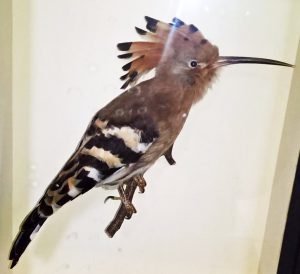If you’re after a bit of history why not pop into the British Museum in Bloomsbury? You’ll find enough culture and artefacts from centuries past to keep you busy for as long as you want. Yes, it’s on the tourist trail. But given that it houses some of world’s most interesting relics it would be shame to pass it up. And let’s face it; this was the first national public museum in the world, founded in 1753.
This is a museum you can dip into as and when it takes your fancy. Yes, you may need to queue to get through security – a sign of our times – but it’s worth the wait.
I recall the days when I could enter from the street and trip up the steps of the grand exterior with its Roman columns. No bag check, no scrutiny. But sadly, no more. I also remember researching in the old British Museum library, before it moved to its new home near St Pancras station. The round space is now the new courtyard with its wonderful glassed roof.

When I studied there it had a wonderful, calm, womb-like interior. I sat at curved tables with small lights above. They all formed a circle around the room. I would note the books I wanted and my table number and then hand in my request. Following a coffee in the café I’d arrive back and there my books were, like magic.
To look at older books and manuscripts I had to visit a different room. Here there were low lights and only pencils for notes, which helped preserve their antiquity. It was a truly memorable experience.
If you can only afford a quick trip, but want to breathe in the atmosphere, then visit The Enlightenment. This gallery on the ground floor explores the world of the 18th century. Look above the huge door flanked by Roman columns as you enter. Here you’ll find a quote from Alexander Pope painted in gold – ‘The glory, jest and riddle of the world’.
This is a room that has its feet steeped in the museum’s history. The 71,000 objects that formed the original museum were bequeathed by naturalist and collector, Sir Hans Sloane to King George II for the nation. On 7 June 1753 an Act of Parliament established the British Museum. And in 1828 The Enlightenment was designed to house the library of King George III, the grandson of the previous king.
The first thing that struck me was that this room does indeed feel like an old library. And despite the artists sketching and the tourists, young and old, it has that quiet reverential air that libraries hold.
A gallery runs along the top of the room which houses glass fronted bookcases. A simple gold balustrade protects the walkway. This gallery reflects the Age of Enlightenment – a time when collections were being amassed to observe and understand the world.
Behind the glass are stuffed birds, ancient china vessels and marble samplers. There are shells, leather and gold embossed books, large and small. And standing beside the cases of objects dotted about the gallery are the busts of Hercules and the notable 17 century botanist John Ray to name a few. Sir Joseph Banks, who took part in Captain James Cook’s first great voyage (1768–1771), is among the luminary.

You can pause, take time and immerse yourself. Or just soak up the atmosphere. Either way you’ll glean some pleasure from the collection. The museum says you can explore two million years of history within its walls. There’s so much to discover. But if you only visit this gallery it’s worth the trip. And it may well inspire you to return.
Getting there
The British Museum is at Great Russell St, Bloomsbury, London WC1B 3DG.
There are two tube stations close by – Russell Square on the Piccadilly Line and Holborn on the Piccadilly and Central Line. It’s a central location with Oxford Street and Tottenham Court Road a short walk away.